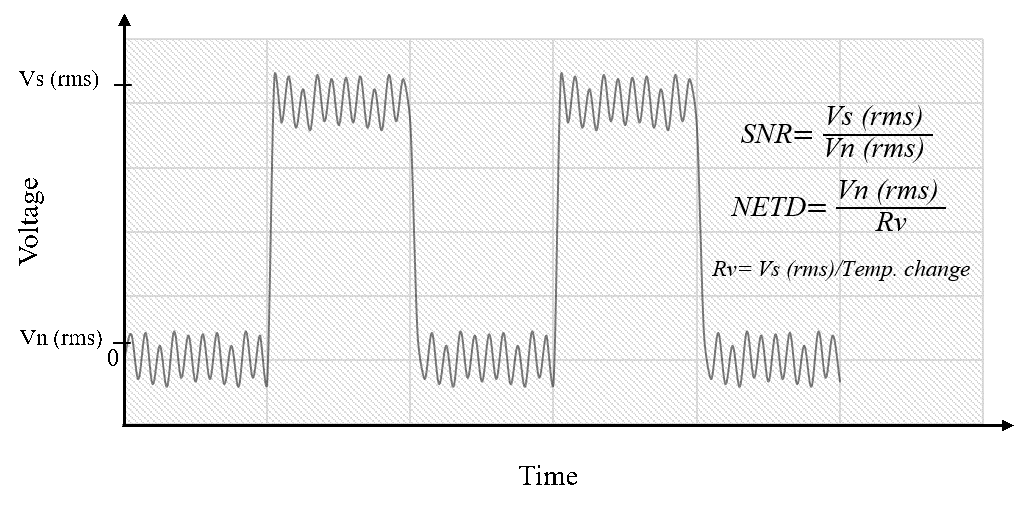In military applications, thermal imaging devices are widely used for night surveillance, live object detection in rescue operations, targeting and range identification, and thermal mapping. Thermal imagers can be used for object identification in worst day-night conditions like high humidity, and foggy and hazy conditions whereas the image intensification technology work only in a low light environment. Military thermal imagers are developed with the ability to image at night without additional illuminators.
What is NETD & How is it measured?
Thermal devices facilitate non-destructive temperature monitoring of multiple objects in a single frame. The sensitivity of the thermal detector determines the minimum temperature difference between the background and the object that can be distinguished. Noise Equivalent Temperature Difference (NETD) determines the level of thermal sensitivity of a thermal device. The lower the NETD value, the higher the sensitivity, producing a more detailed image.
NETD helps in determining the effect of system noise on the thermal response of the device. This is the key parameter used to test the merit of a thermal device. It is the signal-to-noise figure that represents the temperature difference between the object and background, which would produce signal voltage equal to the camera’s effective temporal noise. NETD expresses the temperature difference required to get a signal-to-noise ratio of unity. It, therefore, represents approximately the least temperature difference at which the camera can work out. Figure 1 depicts the state of a system’s noise voltage and signal voltages.

Figure 1. Illustration of SNR and NETD using system signal and noise voltages.
The successful operation of thermal Imagers requires minimum radiative power that could induce temperature difference (ΔT) in a scene for which Vs (rms) > Vn (rms), or ΔT > NETD.
NETD is calculated by dividing the temporal noise by the responsivity of the sensor and is usually expressed in units of milli-Kelvins (mK), for military applications preferred choice of NETD is up to 50 mK. The value is a function of the camera’s f/number, signal integration time, and the temperature at which the measurement is made.
How does NETD affect the quality of an image?
The images below show the same scene recorded by two different cameras. One camera has a NETD of 40 mK and the other 80 mK. The low-temperature background of an image taken by larger value (80 mK) NETD camera shows lesser thermal contrast or lesser clarity between the human target and the background whereas, the image was taken by the lower value of NETD i.e. 40 mK is showing higher thermal contrast or more celerity between human target and the background. However, here the net 40 mK the difference doesn’t seem like much, but it has a huge impact on the image quality and measurement accuracy.
In brief, the lower NETD value promise the;
Good image – simple to understand and easy to focus on the camera.
Higher efficiency with a better image.
Ease of identifying the objects in a thermal image.
More professional-looking reports with better images.
Figure 2. Comparative illustration of thermal images captured by the thermal Night Vision Scope of different NETD values.
Thermal imaging devices use advanced optics and sensors that digitally process the inputs from the optics of the device to deliver digital raster images of the target and its surroundings. They can detect minute temperature differences to deliver images and identify hidden objects in adverse conditions.
To know more about Thermal Imaging Devices by MKU
click here